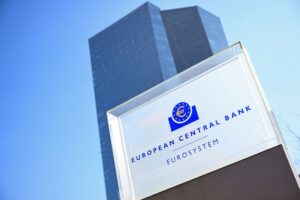ECB Interest Rate Decisions: Key Insights and Market Implications
As the European Central Bank (ECB) approaches its much-anticipated meeting this Thursday, traders and investors alike are bracing for what is anticipated to be the eighth rate cut in this monetary policy cycle. Expectations are high for a quarter-point reduction of the deposit rate from 2%, driven by declining inflation and lingering uncertainties in U.S. tariff policies impacting the eurozone.
An intriguing backdrop surrounds this decision, as the euro area demonstrates surprising resilience in its economic landscape. Despite ongoing challenges, businesses are displaying only lukewarm optimism, particularly in the service sector. This poses a compelling narrative for the ECB as they weigh the fine line between fostering growth and mitigating inflationary pressures.
Key Questions Facing Investors
-
What Actions Will the ECB Take on Thursday?
- A rate cut seems inevitable according to market sentiment, with analysts predicting it won’t spark surprise tensions among stakeholders. ING’s Carsten Brzeski emphasizes that even hawkish stances are notably quieter now, underscoring a universal acknowledgment of the economic hurdles ahead.
-
What Lies Ahead After June?
- There’s a growing consensus that the ECB may opt for a pause in July, with another rate cut expected by year’s end. However, Christine Lagarde, the ECB’s president, is likely to stress a data-driven approach, keeping traders guessing about future moves while pointing to factors like increased government spending and tariff pressures that could skew inflation in the longer term.
-
Navigating U.S.-EU Trade Tensions
- The current trade landscape adds another layer of complexity for the ECB. Although the Union is not facing immediate tariff challenges from the U.S., the ongoing push for beneficial trade agreements remains delicate. Should tariff rates rise to the expected 10-20%, the impact on economic growth might be minimal, but the potential for heightened inflation through aggressive retaliation can’t be ignored.
-
Latest ECB Forecasts
- Anticipated downward revisions for 2026 inflation estimates are likely, spurred by a stronger euro and decreasing oil prices. Economists predict a slight dip in growth forecasts amid tariff uncertainties, projecting a growth rate of 0.9% for the current year, unchanged from previous ECB estimates.
- Concerns Over Long-term Borrowing Costs
- Market observers contend that rising long-term yields, especially in light of recent U.S. credit rating downgrades, could trouble the ECB’s strategy. While not deemed a primary catalyst for policy shifts, these factors add to the overall fragility of the economic environment, particularly for heavily indebted nations.
The Road Ahead: A Cautious Approach
Patrick Saner of Swiss Re aptly characterizes the path the ECB is likely to tread as a "cautious easing cycle," eschewing any drastic shifts in policy in favor of a measured assessment of the economic landscape this summer. The overarching question remains: how will the ECB balance the imperative to stimulate growth against the risks of inflation stemming from global trade tensions and governmental fiscal policies?
At Extreme Investor Network, we believe that understanding these dynamics is crucial for investors navigating the intricate landscape of European finance. Our emphasis on timely insights and thorough analysis equips our community to make informed decisions, leveraging opportunities that may arise from these pivotal ECB determinations.
Stay tuned for more updates as we continue to monitor the financial landscape and offer unparalleled insights into the evolving markets.

